With the arrival of the new film, Jurassic World: Rebirth, humans are once again fighting for survival against dinosaurs on the big screen! But did such encounters really happen at some point in the history of life on earth? In other words, did man and dinosaur ever live at the same time?
The views expressed in this article reflect those of the author mentioned, and not necessarily those of New Creation.
Rebirth of a Franchise
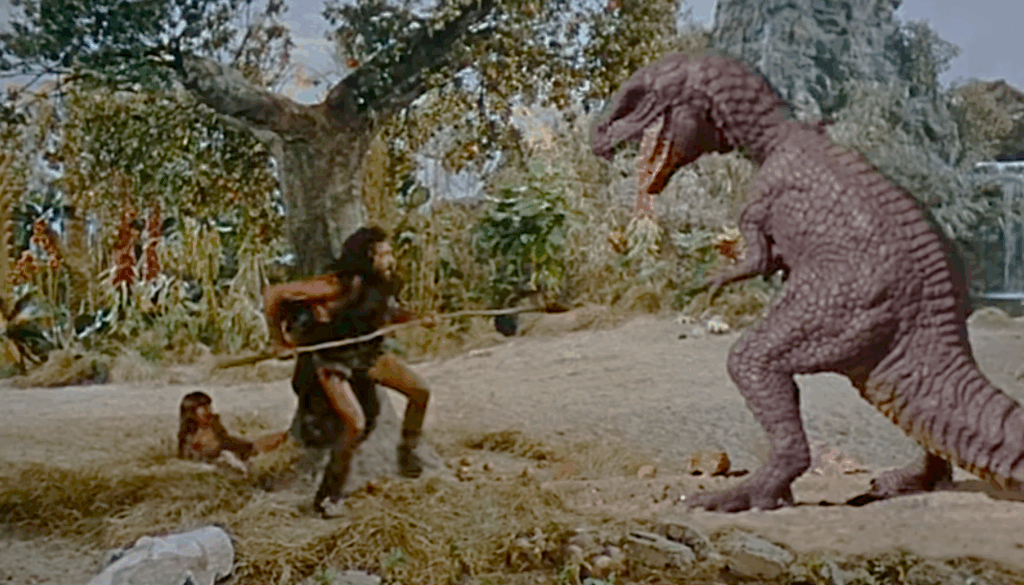
Dinosaurs have been sharing the big screen with humans ever since their debut in the earliest cinema. The Flintstones, One Million Years B.C., and The Good Dinosaur portray humans and dinosaurs living together in ancient times. The Lost World (the original book and its film adaptation), The Land That Time Forgot, Journey to the Center of the Earth, and The Valley of Gwangi show us isolated populations of dinosaurs that have survived into the then-present day. This has even extended to games like Ark: Survival Evolved, where players must survive and tame dinosaurs and other ancient species.
The Jurassic Park/World franchise continues this tradition. The first set of Jurassic World films (Jurassic World, 2015; Jurassic World: Fallen Kingdom, 2018; Jurassic World: Dominion, 2022) focused on what the world might be like if dinosaurs became a part of our world.
Jurassic World: Rebirth takes a different approach. Set five years after the events of Dominion, the film depicts a world where dinosaurs have largely been pushed into Earth’s equatorial zones—areas most similar to their ancient habitats. A team travels to a long-abandoned facility on an island off the coast of Mexico in search of a miracle drug, only to find it overrun by some of the most dangerous creatures from the franchise’s history. While the world may be inhospitable to dinosaurs, this island may prove even more perilous for humans.
Did People and Dinosaurs Really Live at the Same Time?
“Dinosaurs and man. Two species separated by 65 million years of evolution suddenly thrown back into the mix together. How can we possibly have the slightest idea what to expect?”
– Dr. Alan Grant, Jurassic Park (1993)
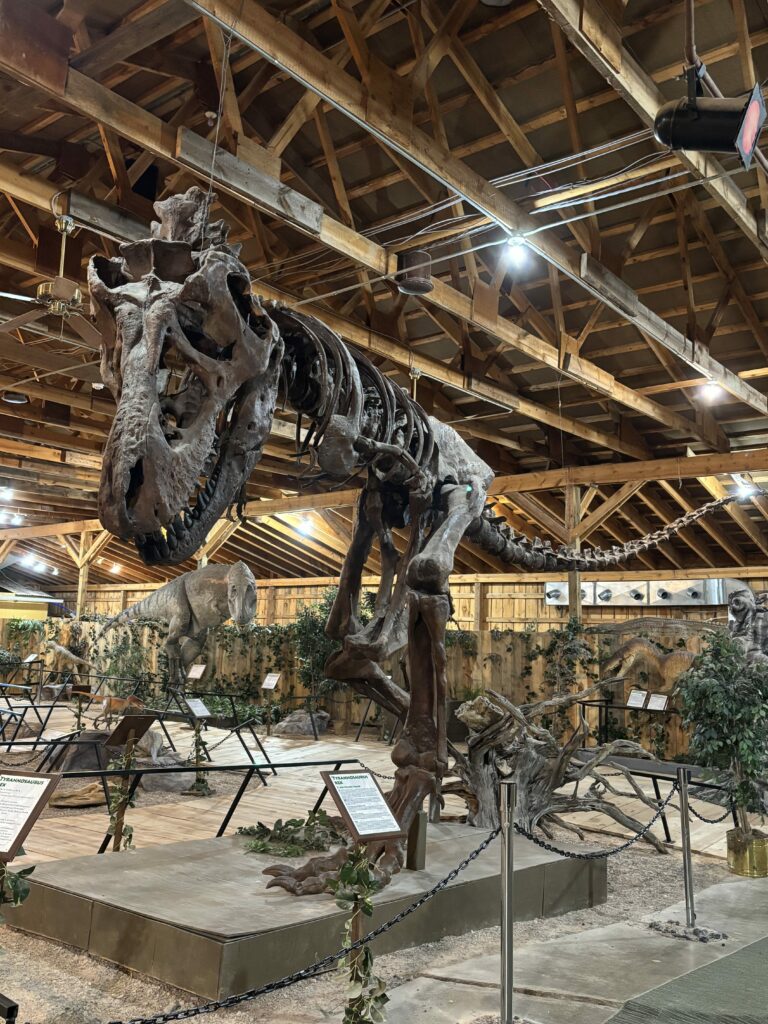
Most scientists think dinosaurs lived during the Mesozoic era. They ruled the earth from around 225 million years ago until their untimely demise around 66 million years ago. The first humans did not evolve until around 2 million years ago. If the old-earth timeline is correct, humans and dinosaurs could never have inhabited the planet at the same time.
However the Book of Genesis provides us with a different view of history. It is recorded that God created humans and the various kinds of animal life perhaps less than 10,000 years ago. God made people and land animals according to their kinds on Day 6 of Creation Week. Since dinosaurs are land animals, it makes sense that God would have also created them on Day 6. This means that dinosaurs and humans have lived at the same time since the very beginning of their existence.
The Soft Side of Dinosaurs
We also have scientific evidence that dinosaurs lived at the same time as humans. Original organic material discovered in the ancient bones of dinosaurs and other extinct creatures should have deteriorated long ago. This is especially the case given the environments in which these creatures were buried. Their presence suggests that these fossils are not as old as often claimed.
Show Me the Evidence!
We should note, however, that this does not mean humans and dinosaurs lived together. After all, just because you live at the same time as panda bears and Galapagos tortoises does not mean you cohabitate with them, does it? Is there any evidence humans and dinosaurs actually lived together?
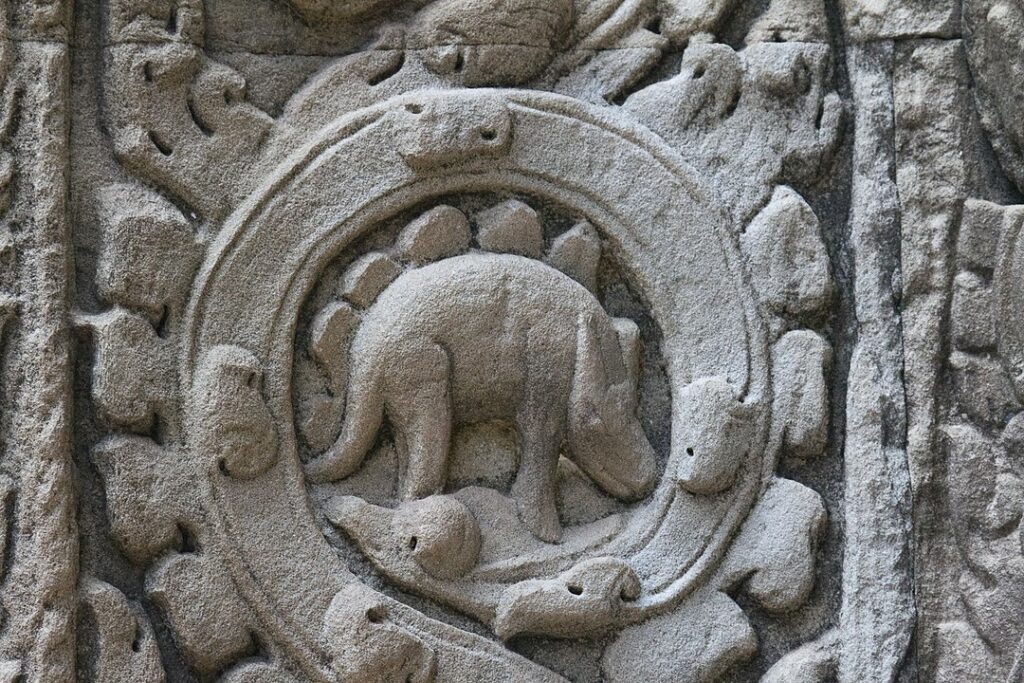
Alleged pieces of evidence demonstrating human-dinosaur cohabitation fill young-earth creationist literature. Over the years, many of us have argued that the Bible describes dinosaurs, among them Behemoth in the Book of Job. We have also identified depictions of dinosaurs in ancient artwork from around the world and oral or written accounts up through the Middle Ages and even into recent times. There are even trackways in the riverbed of Texas’ Paluxy River supposed to show human and dinosaur footprints in the same rock layer.
However, many have called these classic “evidences” for human-dinosaur coexistence into question, even creation scientists. There is dispute as to what Behemoth, Leviathan, and other biblical “dinosaurs” actually mean in their Scriptural context. The identity of the Cambodian stegosaur carving and other ancient “dinosaur” depictions as dinosaurs are questioned.1 Many of the infamous “human” footprints in the Paluxy riverbed are actually deformed dinosaur footprints, or even outright hoaxes.2
Now Eventually You Might Have Dinosaurs in Your Dinosaur Fossil Record, Right?
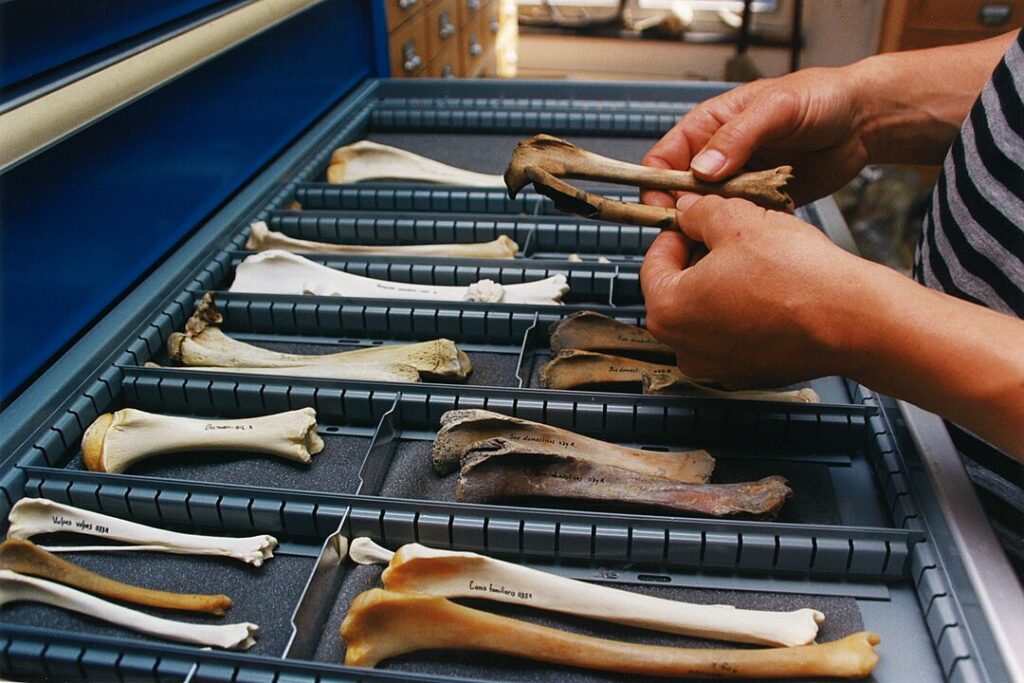
No human remains or artifacts have ever been found at dinosaur dig sites. Dinosaur fossils only appear in Mesozoic rock layers, which most young-earth geologists interpret as deposits from the global Flood. By contrast, archaeological sites (which are all linked with post-Flood human activity) have yet to yield a single dinosaur bone.
This isn’t due to lack of animal remains at those sites. In fact, zooarchaeology (the study of animal remains from archaeological contexts) has uncovered thousands of examples from around the world. In China’s Guanzhong region, Bronze and Iron Age settlements show clear evidence of people butchering and processing deer, pigs, and cattle.3 13th-15th century sites in New Zealand contain ovens, waste pits, and human burials filled with moa bird bones and eggshells, sometimes shaped into tools and ornaments.4 Medieval English towns preserve abundant remains of livestock like sheep, cattle, pigs, and chickens, many bearing cut marks from food preparation.5
But what these sites do not contain are dinosaur bones. If humans and dinosaurs lived together for any significant time after the Flood, we would expect some evidence of that. Where are the waste pits full of charred dinosaur bones? Why don’t we find remains of Fred Flintstone’s order of Bronto Ribs with butchery cut marks or raptor claws fashioned into weapons or jewelry? The absence is striking.
As Bible-believing Christians, we can trust that dinosaurs were present on the Ark (every kind of land animal was). And yes, some interactions very soon after the Flood may have happened. But when it comes to prolonged cohabitation, the archaeological record is silent. Why?
If People Didn’t Live with Dinosaurs, What Did?
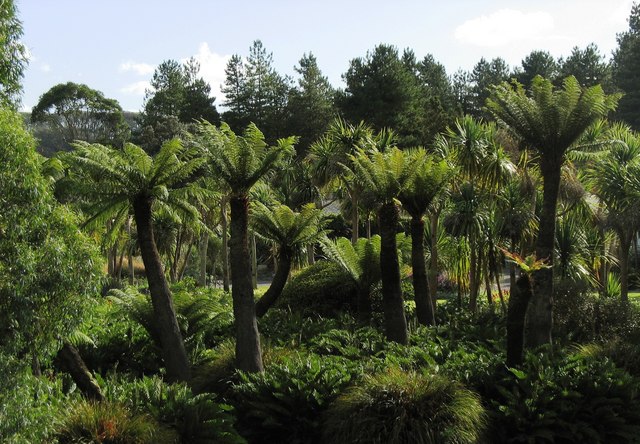
As mentioned above, archaeological sites around the world contain distinctive collections of animal remains. Likewise, dinosaur dig sites contain a consistent “diagnostic suite” of plants and animals. Dinosaurs are often found alongside non-flowering plants such as gymnosperms, cycads, and ferns. These layers also include a particular mix of amphibians, small mammals, some birds, and reptiles like crocodilians and pterosaurs.
Equally important is what these sites lack. It’s not just human remains that are missing; so are modern types of mammals (like beavers, sheep, or elephants), birds (such as songbirds or owls), and flowering plants (like grasses or fruit trees). Rather than being a disappointment, this absence may offer a valuable clue. It suggests that the dinosaur fossil record represents a specific ecological context (possibly entire pre-Flood biomes) that the Flood rapidly buried. In other words, dinosaurs lived in a different environment than the humans and animals we see in the post-Flood world, which could explain their separation in the fossil record.
Why Didn’t People Live with Dinosaurs?
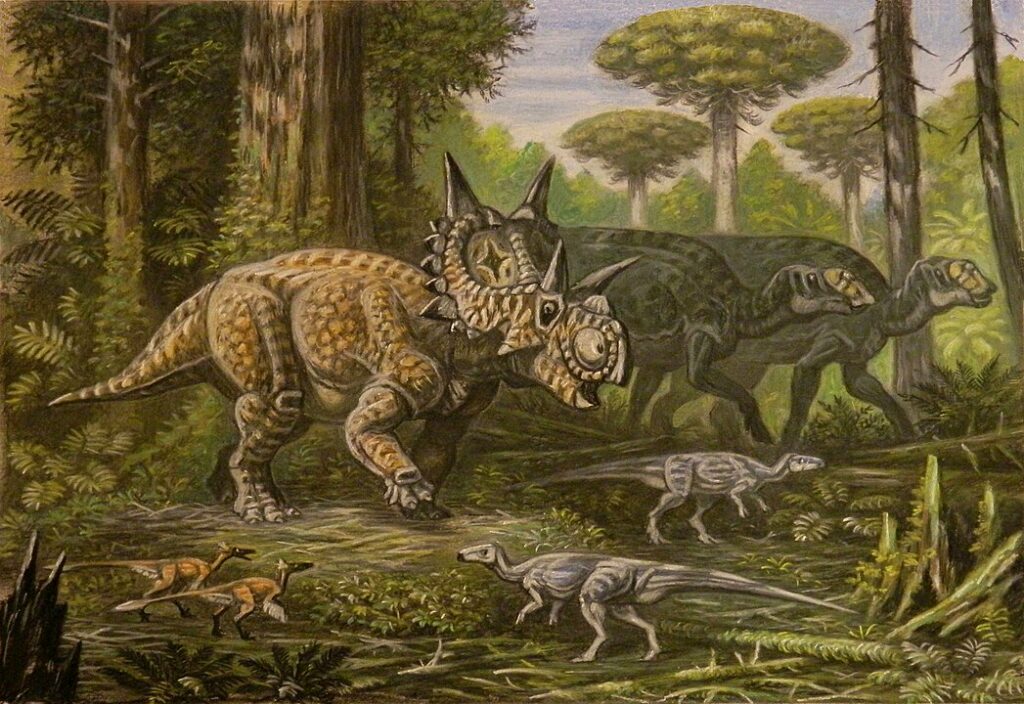
Young-earth paleontologists attribute most of the fossil record to Noah’s Flood. Factors in the exact order the fossils appear in include where they lived and their elevation.6 Supporting this idea is the observation that Mesozoic fossil layers contain complete, functional ecosystems—networks of plants and animals that lived together in the same biomes. These ecosystems had the same basic structure as modern ones. They were composed of energy producers, consumers, and decomposers, but the specific lifeforms were different.
Instead of flowering plants and grasses, we find ferns, horsetails, and cycads. Instead of buffalo and rhinoceroses, the plant-eaters included Placerias (a tusked “mammal-like reptile”), Stegosaurus, and duck-billed dinosaurs like Edmontosaurus. And while we now have lions and tigers, Mesozoic predators included Postosuchus and theropods like Allosaurus, and Tyrannosaurus.7
The absence of modern mammals, birds, flowering plants, and especially humans in these layers suggests that these organisms lived in a separate biome—or perhaps a suite of biomes—in the pre-Flood world. This idea fits well with the early chapters of Genesis, which describe flowering plants (e.g., Genesis 1:11–12), modern kinds of animals (e.g., Genesis 4:2), and the development of human civilization (e.g., Genesis 4:20–22).
Interestingly, we see something similar in the modern world. Grasslands exist across continents, but each one has different species of animals and plants. African grasslands have lions and wildebeest; North American ones have bison and coyotes. In the same way, it’s possible that God structured the pre-Flood world with multiple distinct biomes, each filled with unique life, adding even more variety and richness to His creation.
What About Post-Flood Dinosaurs?
“Dinosaurs had their shot. But nature selected them for extinction.”
– Ian Malcolm, Jurassic Park (1993)
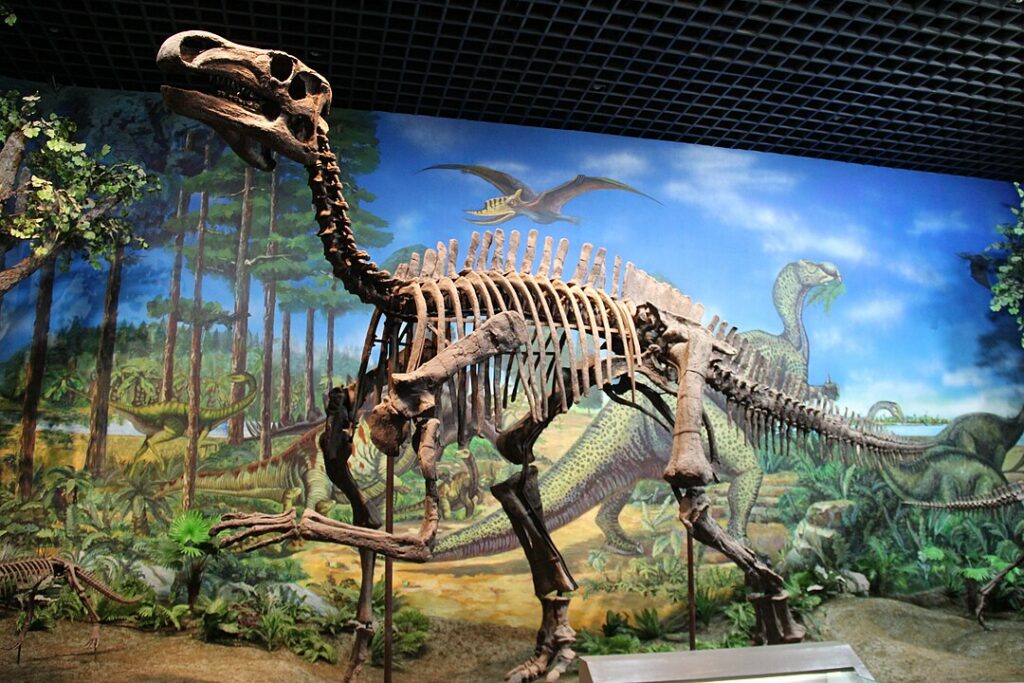
We have discussed why dinosaurs and humans may not occur in the same dig sites formed during the Flood. But why do we not find humans coexisting with post-Flood dinosaurs? After all, a handful of representative dinosaur kinds survived the Flood aboard the Ark. So would we not expect to find evidence of them in post-Flood times—even up to the present day?
Not exactly. Recall that pre-Flood dinosaurs inhabited a series of biomes specifically created for them, but the Flood completely altered the world’s ecology. New environments colonized the planet, and it seems that the base of the dinosaur food chain—plants like cycads, conifers, and ferns—did not regain their former ecological dominance. Flowering plants took over the plant kingdom. It is also possible that mammals and birds, which have a much faster growth rate than most dinosaurs did, simply outcompeted them for the available resources. The absence of post-Flood dinosaur fossils would seem to suggest that these creatures did not do well in the new world, and probably died out shortly after the Flood. Dinosaurs certainly do not appear to have survived even to the Medieval times.
This should not be considered unusual, as many kinds of animals have been wiped out since the Flood. Some became extinct relatively soon after, like the meat-eating hoofed mammals called the mesonychians. Others, like the moas, elephant bird, and thylacine have become extinct more recently, within the past 1,000 years.
The world seems to have proven to be largely inhospitable for dinosaurs. Ironically, this is the exact same reason dinosaurs have disappeared from most parts of the world in Jurassic World: Rebirth.
Conclusion
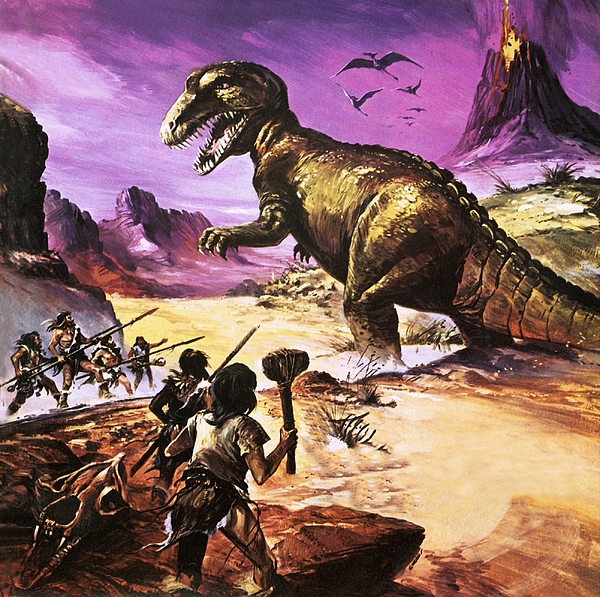
We, as young-earth creationists, can confidently say that dinosaurs and humans did indeed live on the earth at the same time. Furthermore, the historical record of Noah’s Ark suggests that they interacted at least on occasion. However, the biblical and scientific evidence suggests that such interactions were limited. God designed a pre-Flood world with diverse biomes tailored to specific creatures, and it seems likely that humans and dinosaurs occupied different parts of the world made especially for them.
After the Flood, our planet’s ecology was forever changed. The specially created environments in which dinosaurs once thrived are gone. The ecological niches dinosaurs filled vanished with them. The apparent absence of dinosaurs in post-Flood human history suggests they were unable to adapt to the new conditions, dying out relatively early on in the post-Flood era. While the events of Jurassic World: Rebirth are fictional, they serve as a stark reminder that we now live in a world radically altered from the one God originally created. The fossil record stands as a silent testimony to that lost world—a world and its creatures that God once called “very good.”
Footnotes
- Halley, K. (2025, June). Dinosaurs on ancient artifacts? A reappraisal of twelve examples. Creation Ministries International. ↩︎
- Neufeld, B. (1975). Dinosaur tracks and giant men. Origins, 2(2), 64–76. ↩︎
- Wang, Q., Liu, K., Zhai, L., Liu, B., Sun, H., & Li, Y. (2023). “Animal resource exploitation in the northern Guanzhong region during the mid-to-late Holocene: A zooarchaeological case study of the Xitou site.” Frontiers in Earth Science, 10, Article 1064818. ↩︎
- Oskam, C., Allentoft, M. E., Walter, R., Scofield, R., Haile, J., Holdaway, R., et al. (2012). “Ancient DNA analyses of early archaeological sites in New Zealand reveal extreme exploitation of moa (Aves: Dinornithiformes) at all life stages.” Quaternary Science Reviews, 52, 41–48. ↩︎
- Albarella, U., & Davis, S. (2018). “The ‘long’ sixteenth century: A key period of animal husbandry change in England.” Archaeological and Anthropological Sciences, 10(2), 623–634. ↩︎
- McGuire, K., Southerden, S., Beebe, K., Doran, N.; McLain, M., Wood, T. C., and Garner, P. A. (2023). “Testing the Order of the Fossil Record: Preliminary Observations on Stratigraphic-clade Congruence and Its Implications for Models of Evolution and Creation.” Proceedings of the International Conference on Creationism: Vol. 9, Article 7. ↩︎
- Wise, K.P. 2011. “A closer look at Noah’s world: same time, different place.” Answers 6(4):56-63. ↩︎

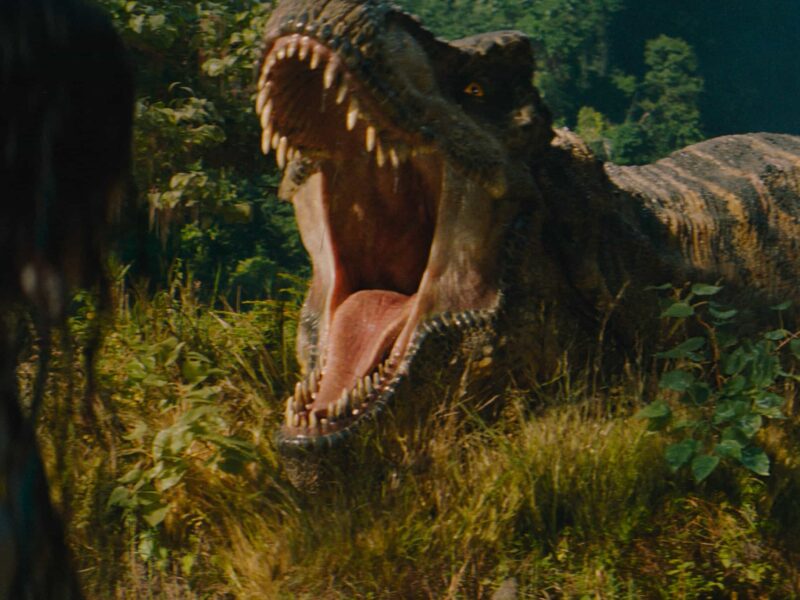
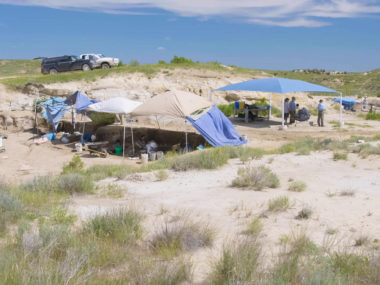
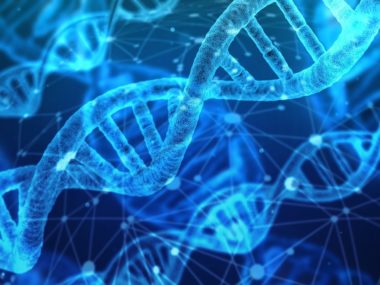
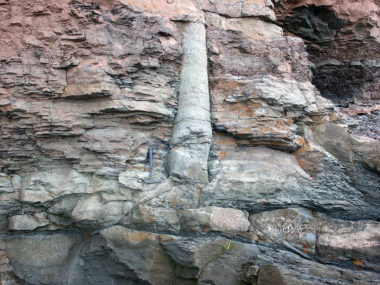


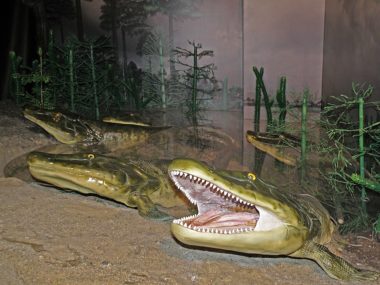




I’m not sure I believe that dinosaurs were taken on the ark, in fact I find it hard to believe God can be wholly attributed with the creation of dinosaurs. They are completely and utterly incompatible with humans on any level. I do find it very curious that in the same chapter in the book of Enoch (7:5), that Enoch discusses progenation between fallen angels and human women (which the Bible proper also discusses in Genesis 6), Enoch also discusses the fallen ones sinning against birds, beasts, reptiles and fish: “5. And they began to sin against birds, and beasts, and reptiles, and fish, and to devour one another’s flesh, and drink the blood.”. I always thought this meant they were messing about with DNA, creating more hybrid species. If angels were able to progenate giants via adding their own DNA to humans, as is mentioned in Genesis 6, why wouldn’t they be able to do the same with non-human animals, by whatever mechanism. As humans we have no idea as to the capabilities of angels, let alone fallen angels. The bible is fairly silent on the subject, which could also be a clue. If dinosaurs were not wholly created by God, and they are essentially a corruption of what He created, what is there to mention other than the watchers sinned against the animals He DID create?
Very good article, I remember that I came to the same conclusion about biomes some time ago (although I am just an amateur). What I wonder is, is there even a small chance that some organism from one biome passed to another and got fossilized there? You have probably heard of the “Precambrian rabbit”, although nothing like that has been discovered so far, what there has been is an Early Ordovician orbatid mite,[1] which is a big problem for the traditional model of chelicerate evolution, because according to the most accepted theory, arachnids supposedly evolved from eurypterids, these from xiphosurans (horseshoe crabs) and these from other horseshoe crab-like euchelicerates (Offacolidae? ), these in turn from Mollisoniida, which appear in the Cambrian. The problem here is that there is a mite before the other arachnids even exist. Also for some reason this article was not taken seriously by anyone, and almost everyone who cites it opposes it saying that it is later contamination while in the original article it is made very clear that it is not possible that it is contamination because all the laboratory equipment has been used only for Cambrian and Ordovician rocks.
1. Bernini, F., Carnevale, G., Bagnoli, G., Stouge, S. (2002). An Early Ordovician oribatid mite (Acari: Oribatida) from the island of Öland, Sweden. In: Bernini, F., Nannelli, R., Nuzzaci, G., de Lillo, E. (eds) Acarid Phylogeny and Evolution: Adaptation in Mites and Ticks. Springer, Dordrecht. https://doi.org/10.1007/978-94-017-0611-7_6
You are so close…
🙂
My grandfather talked about the millions of Passenger Pigeons filling the trees around where he lived. In the evening,Post Civil War veterans, he said, would start shooting them from when they flew in to roost until dark. They are definitely now extinct.
That is a really interesting nugget of family history! Thanks for sharing! It is quite sobering to think about all of the species we have lost, even within the past hundred or so years.